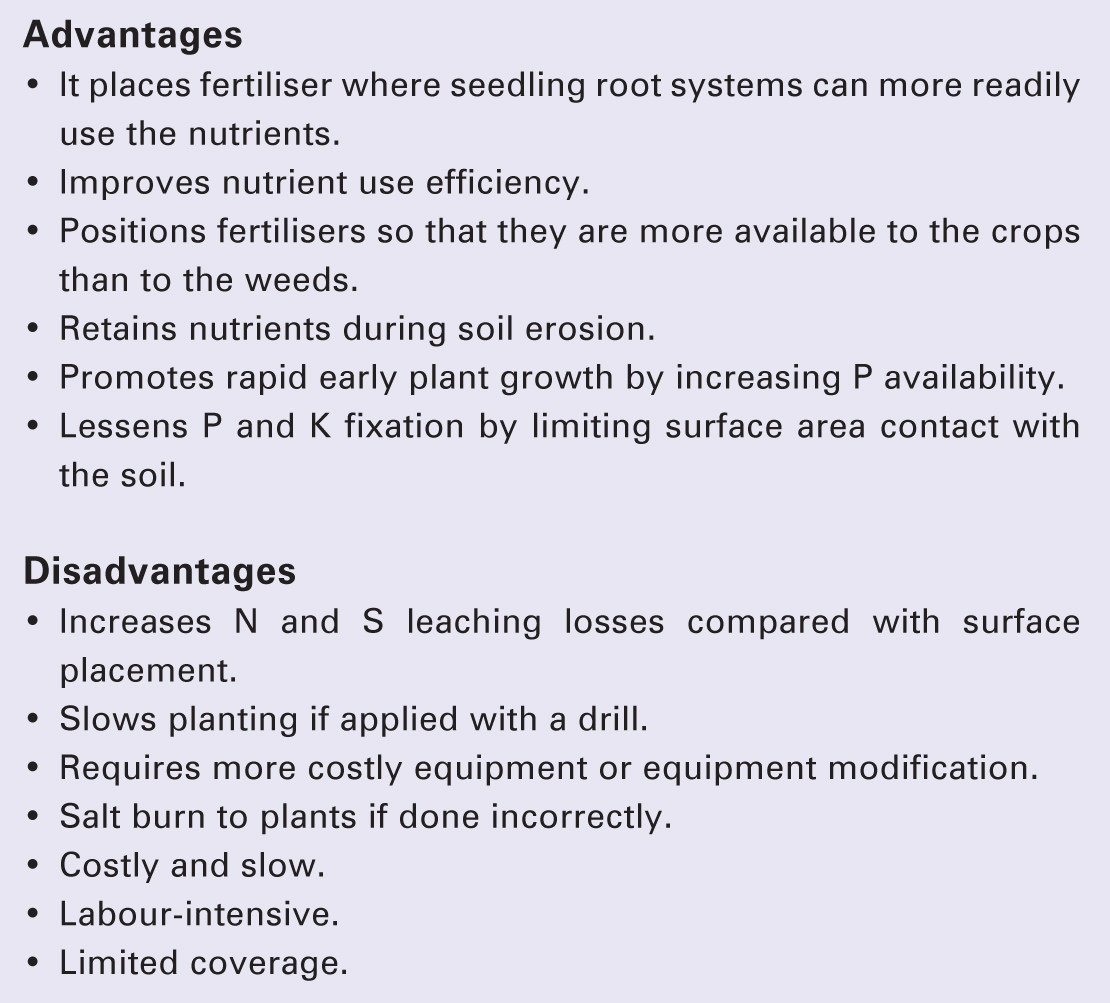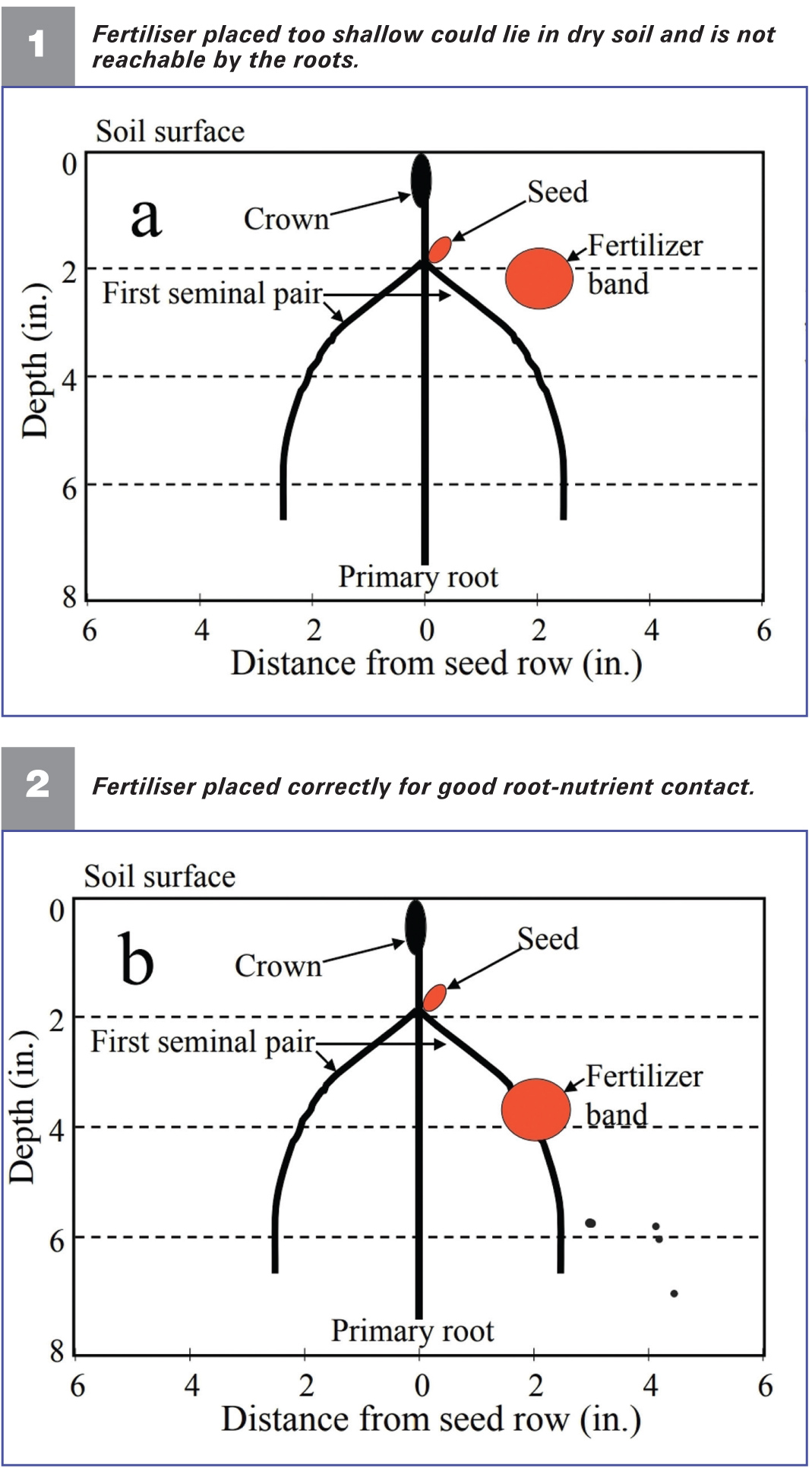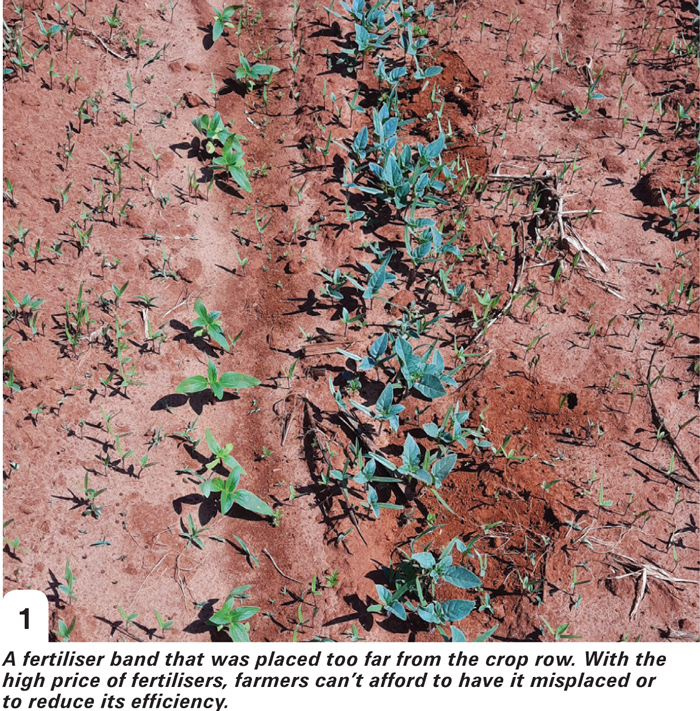July 2024
| LEONARD THAPHATHI, MANAGER: DEVELOPING AGRICULTURE AT NWK |
 |
Fertilisation is one of the practices used to boost productivity and the competitiveness of crops against weeds and other environmental elements. Precise fertiliser placement plays a pivotal role in effective crop management. It significantly enhances the nutrient uptake by plants, thereby promoting optimal yields in agronomic crops.
Fertilisation is a crucial practice to enhance crop productivity and competitiveness, aiding in combatting weeds and other environmental challenges. Precise fertiliser placement plays a pivotal role in effective crop management.
WHY FERTILISE?
Soil consists of a blend of finely divided rocks, minerals and organic materials, encompassing components such as sand, silt, clay and organic matter. While these elements contribute to soil tilth, aeration and water absorption, they often lack sufficient nutrients to sustain consistent, healthy crop growth.
Fertilisers play a vital role in replenishing the nutrients depleted by crops from the soil. Without the addition of fertilisers, agricultural productivity and crop yields would significantly decrease. This is why fertilisers are used to boost the soil’s nutrient reserves with minerals that can be quickly absorbed and used by the crops.
Meeting the needs of a growing population with limited resources poses significant challenges. Declining soil fertility, weed proliferation and nutrient deficiencies have contributed to a decline in agricultural output, underscoring the crucial role of fertilisers in modern agriculture.
These chemical compounds applied to crops to enhance their productivity. Farmers rely on these substances regularly to boost their crop yields. Fertilisers contain vital nutrients that are essential for plant growth, such as nitrogen, potassium and phosphorus.
Fertilisers can be important to plants in the following ways:

FERTILISER PLACEMENT
The objective of fertiliser placement is to enhance the interaction between roots and nutrients, particularly during the initial stages of crop and root growth, while avoiding any hindrance to emergence or establishment. It’s crucial to place fertiliser where fine roots are most concentrated or where it will naturally migrate to such regions to maximise the yield potential.
The allocation of nutrients is a critical aspect of nutrient management, as it significantly impacts the subsequent availability of nutrients. Incorrect placement may diminish the yield potential and lead to financial losses. When addressing the nutrient placement, factors to consider include:
Common fertiliser placement methods
1. Broadcasting
Broadcast fertiliser application refers to a uniform distribution of material on the soil surface. When applied after planting, a broadcast application is often referred to as a top-dress application. When a broadcast application is incorporated into the soil, it is referred to as broadcast incorporated.

2. Banding
Banding refers to placing nutrients below, above, on one side or on both sides of the seed or seedlings at planting. The aim of this placement method is to ensure application of specific fertiliser formulations close to seeds or plant roots to ensure high nutrient availability. Fertiliser bands should be placed at least 4 cm away from the seed and 4 cm below the seed to prevent salt damage and ammonia toxicity.

IMPACT OF FERTILISER PLACEMENT
Root development
The primary root develops first, followed by the first seminal pair. Less soluble fertilisers, such as P, placed below the seed will be accessed earlier in the growing season than fertilisers placed at the side of the seed on the same depth (Figure 1).
Next, seminal pairs and crown roots develop and can access fertiliser placed at the side of the seed (Figure 2). The proper band should be 4 cm to the side and 4 cm below the seed for the developing roots to hit the banded fertiliser soon after development.
Mature root systems generally grow much deeper than the depth of applied fertiliser, although the final depth is dependent on the crop and soil moisture. Deep roots can access mobile nutrients, such as nitrate, which are in fertiliser placed on or near the surface if the moisture is sufficient.

Fertiliser and weed competition
The broadcasting of fertiliser makes the fertiliser available for weeds at a much larger scale. On the other hand, placing fertiliser in the soil near the seed or concentrated in the root zone positionally favours the crops and limits the supply to weeds. Weeds close to banded fertiliser must be controlled because competition is more intense where nutrients are concentrated.
It is very important that planters are calibrated and monitored constantly during planting to ensure that fertiliser is still being applied at a desired depth and distance from seed. Any fertiliser that is banded incorrectly may result in poor crop development and gives the weeds that receive it an advantage (Photo 1).
If you limit the application of fertiliser to your crop, this will give it a good competitive advantage against the weeds. The improper placement of fertiliser will lead to a decline in the crop yield and may increase the cost of weed control, which is reducing the farmer’s income.

P availability
Choosing a fertiliser application method is an important management decision for producers, from both efficiency and environmental standpoints. Due to P being relatively immobile in the soil profile, the application distance is important to maximise the P uptake efficiency.
The P movement in water runoff causes eutrophication, which promotes algal growth in water bodies and is an increasing environmental concern. Broadcast P application is often the simplest method and is suited for higher rates of fertiliser application. This maximises fertiliser contact with soil constituents over a larger volume of soil, thus increasing the potential for P fixation. Because of strong P adsorption to soil particles, broadcast application increases the risk of runoff to nearby rivers and streams.
Band application of P can provide many advantages over broadcast application at low soil test levels. By fertilising only a small volume of soil, soil-to-fertiliser contact is reduced, resulting in decreased P fixation and increased plant uptake.
How much to apply
The potential yield of an area is typically influenced by factors such as the rainfall, soil potential and soil condition, which can be altered by different cultivation methods. The fertiliser requirements for achieving a specific yield are closely tied to the soil test results, soil condition, soil potential and local rainfall patterns.
Collaborating closely with fertiliser representatives is crucial for farmers to obtain accurate analyses and recommendations tailored to their environment and financial circumstances. For those seeking general recommendations, the fertiliser handbook compiled by the Fertiliser Association of South Africa (FERTASA) provides guidelines for various crop fertiliser requirements.

CONCLUSION
Neglecting regular checks on your planter operations is inexcusable. Planting with fertiliser inadvertently deposited on the surface due to uncalibrated equipment or obstructed/broken tubes can significantly diminish yields, transforming your endeavours from profitable to costly. Every effort must be exerted to ensure proper nourishment of the crop, providing it with optimal conditions to achieve target yields.
Since fertiliser stands out as one of the most substantial expenses, its application, particularly in terms of placement, should be executed with utmost effectiveness. The strategic placement and timing of fertilisers have the potential to maximise both yield and nutrient utilisation efficiency, ultimately boosting net profits for producers.
REFERENCES
Publication: July 2024
Section: Pula/Imvula